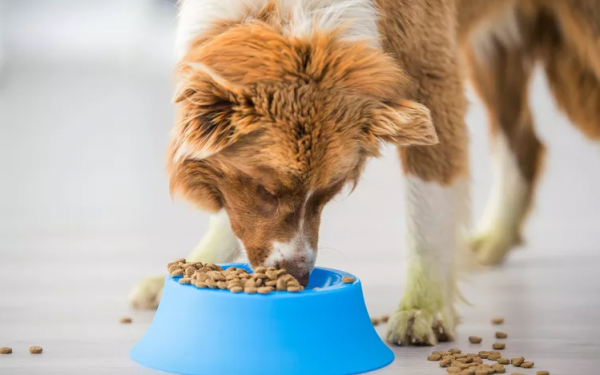Every pet parent wants to know if they’re feeding their dog the right amount of food. But how do you know when his diet is just right? Here’s a simple test: Take a critical look at him while he’s standing still. Does he have an hourglass figure that tapers in at the waist? (That’s a good thing!) Or has his waist disappeared? (Hint: He’s overweight.) And conversely, can you see—not just feel—his ribs? (He’s underweight.)
If you said “yes” to either of the last two questions, you may need to make some adjustments to your dog’s diet to make sure he reaps the health benefits of consuming just the right amount of high-quality food. Read on for more on figuring out just how much to feed your dog.
What Happens If I Feed My Dog Too Much?
Simply put: Your dog gets overweight. You may think to yourself, “Well, there’s just more of him to love.” And that may be true, but those extra pounds are not good for his health. If your dog eats too many calories every day, he may end up obese—which means he could suffer from the related health issues that come with that condition, such as osteoarthritis, congestive heart failure, labored breathing, Cushing’s disease, skin disorders, some cancers, a shortened life span, and a reduced quality of life.
Shockingly, more than 50 percent of dogs in the U.S. are overweight, according to the Cummings School of Veterinary Medicine at Tufts University. So relying on the dog food bag’s feeding directions or letting your pup eat as much as he wants are probably not good approaches if you want to keep your dog healthy and active for as long as possible.
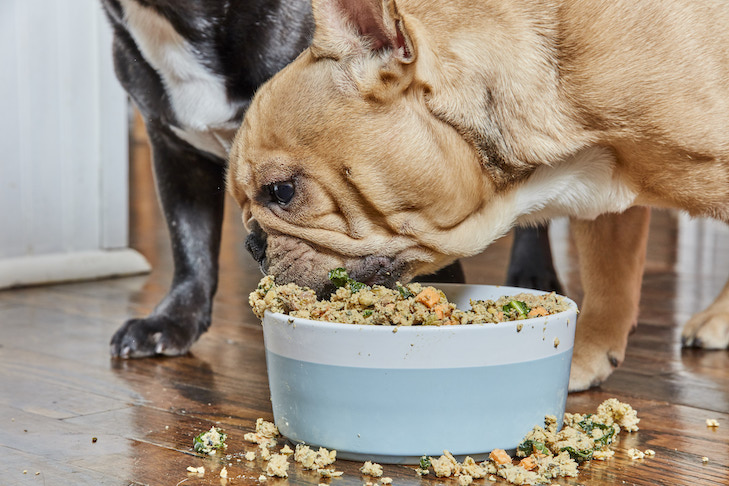
What Happens If My Dog Is Underfed?
He’ll suffer from nutritional deficiencies, lose weight, and develop a dull coat, according to Jessica Romine, DVM, DACVIM, a veterinarian at Animal Referral Centre in Aukland, New Zealand. “Plus, without enough calories, he’ll be hungry all the time and may go searching for food in the trash,” says Romine, who is board-certified in veterinary internal medicine. “Even worse, if he’s drastically underfed for a long time he could end up with heart damage.”
How Do Age, Lifestyle, and Health Factor Into the Mix?
Let’s start with age. Growing dogs need more food than adult dogs. And it takes dogs about two years to be considered full-grown, although toy breeds may be done growing by 6 to 9 months, Romine says.
Older dogs, on the other hand, may require 20 percent fewer calories to maintain their ideal weight due to metabolic changes. So they may benefit from eating a food that’s lower in fat and calories. Sometimes, though, dogs lose weight as they transition from old to very old. That’s often because their appetite decreases, maybe due to a diminished sense of smell or taste or difficulty chewing or swallowing. Such dogs may benefit from a higher-fat diet that’s more palatable and includes more calories.
Lifestyle—or how active a dog is on a regular basis—can vary greatly from dog to dog. Compare the energy level of a border collie who wants to stay busy with a canine couch potato who is the same age and weight. The border collie absolutely needs more calories than his inactive friend. Other dogs, like hunting dogs, don’t live the same lifestyle all year long, Romine says. “A dog who is out in the fields all day hunting with his owner will burn 25 to 35 percent more calories than during the days of the year when he’s just a family pet. Calculate his feeding amounts accordingly.”
Regarding health, dogs with medical issues or dietary needs may require specialized feeding schedules or restrictions on what they eat. Plus, “Spaying or neutering your dog changes his hormone balance and reduces his metabolic requirements by 25 percent on average,” Romine says.
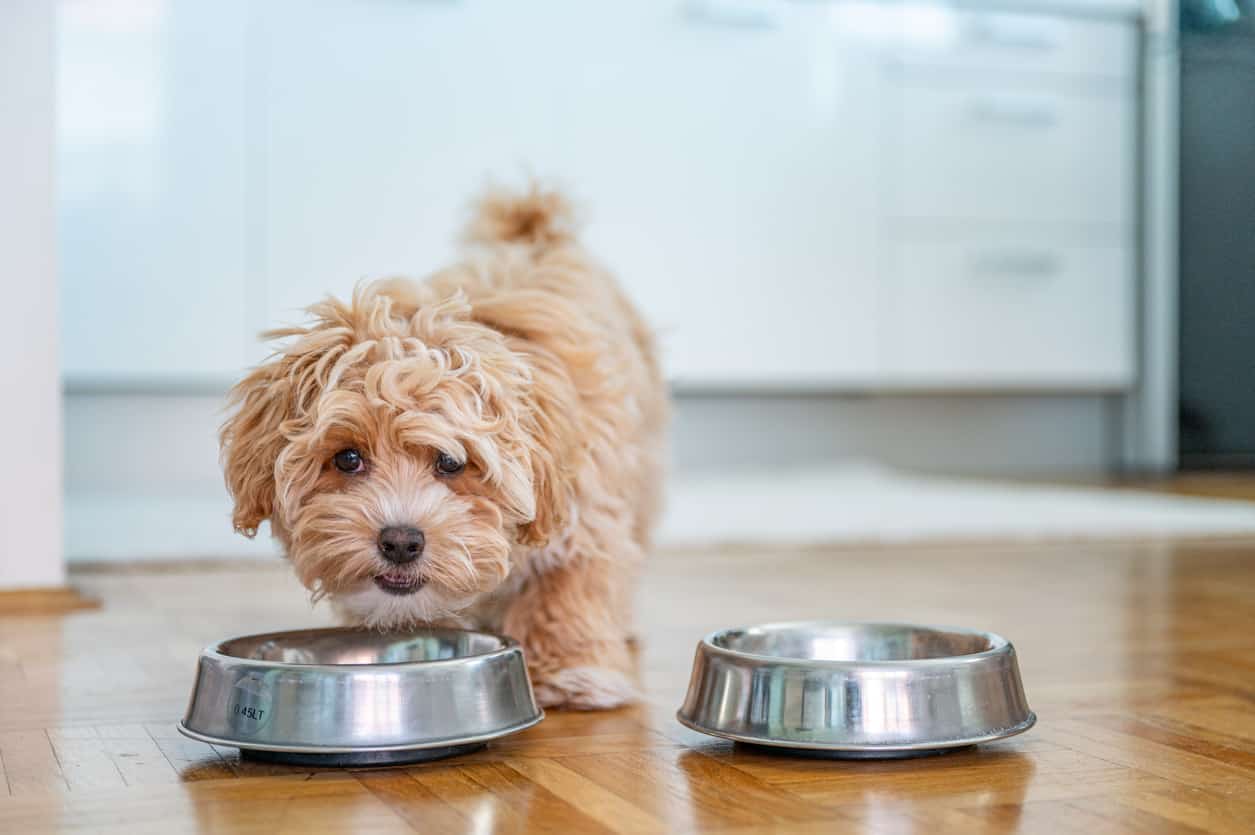
Wouldn’t It Be Easier to Let My Dog Free Feed?
It would be easier, but it wouldn’t be accurate. Your dog may end up overweight from overeating. “Some breeds, like Labrador retrievers, will eat anything,” Romine says. “Their hunger does not turn off, even if they’ve had more than enough calories for the day.” Households with multiple dogs run into trouble with free-feeding because it’s hard to track each dog’s intake.
How Do I Figure Out How Much I Should Feed My Dog?
Figuring out how much to feed your dog is a little tricky, because breed, age, size, energy level, and health all factor into how often dogs should eat and how much. As you might suspect, larger breeds—like Great Danes and mastiffs—weigh more and therefore require more calories per day than medium and small breed dogs.
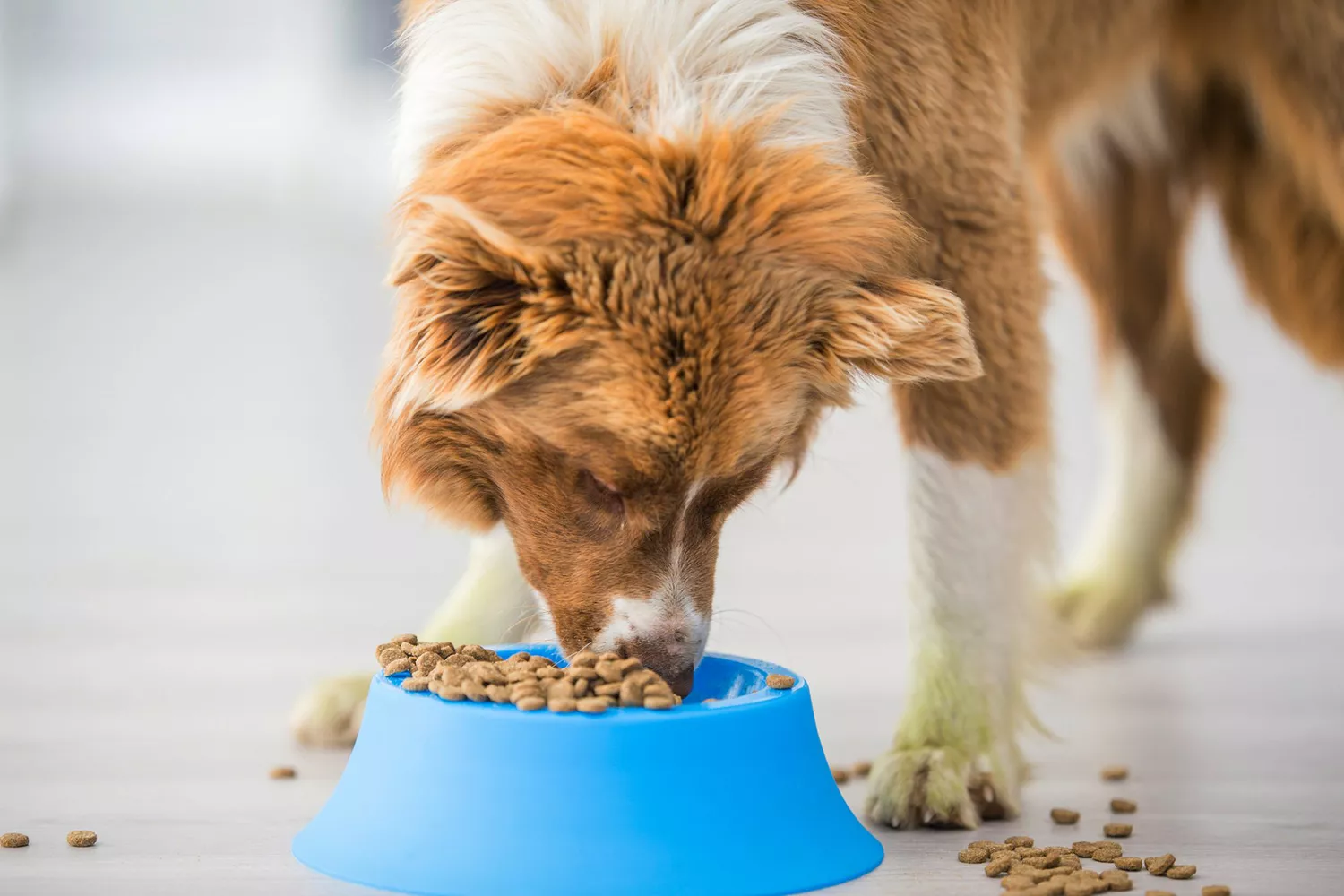
Veterinarians and board-certified veterinary nutritionists are expert sources of information about what and how much your dog should eat. A vet will decide how many calories your dog needs by looking at his current weight, his body condition (overweight? underweight? just right?), and the type of food he’s eating. You can do that, too, by using an online calculator.
How Do Online Calculators Tell Me How Much I Should Feed My Dog?
Online calculators provide a good baseline for how many calories your dog should get a day. If you’re wondering which one to use—and your dog is currently healthy and active—the Cummings School of Veterinary Medicine recommends the Pet Nutrition Alliance Calorie Calculator. Although designed for pet industry professionals, this calculator can help you get a handle on how much food your dog should eat every day.
You need to key in your dog’s weight, indicate whether your dog is spayed, neutered, or intact, and estimate his body condition by using a sliding scale that ranges from 1–9, with 5 being ideal. You’ll also identify the brand of dog food you use and how many calories per cup, gram, or can it contains. You can find the calorie information on the back of the dog food bag or on the can; you can also do an online search for this information.
Keep in mind that unlike a vet, this calculator is not able to take into account every aspect of your dog’s health and lifestyle. So you may need to tinker with the number of calories and food you give him. Your goal is to feed him to maintain his ideal weight, not his current weight if it’s too much or too little. And take into account his needs may change over time, so keep calculating.
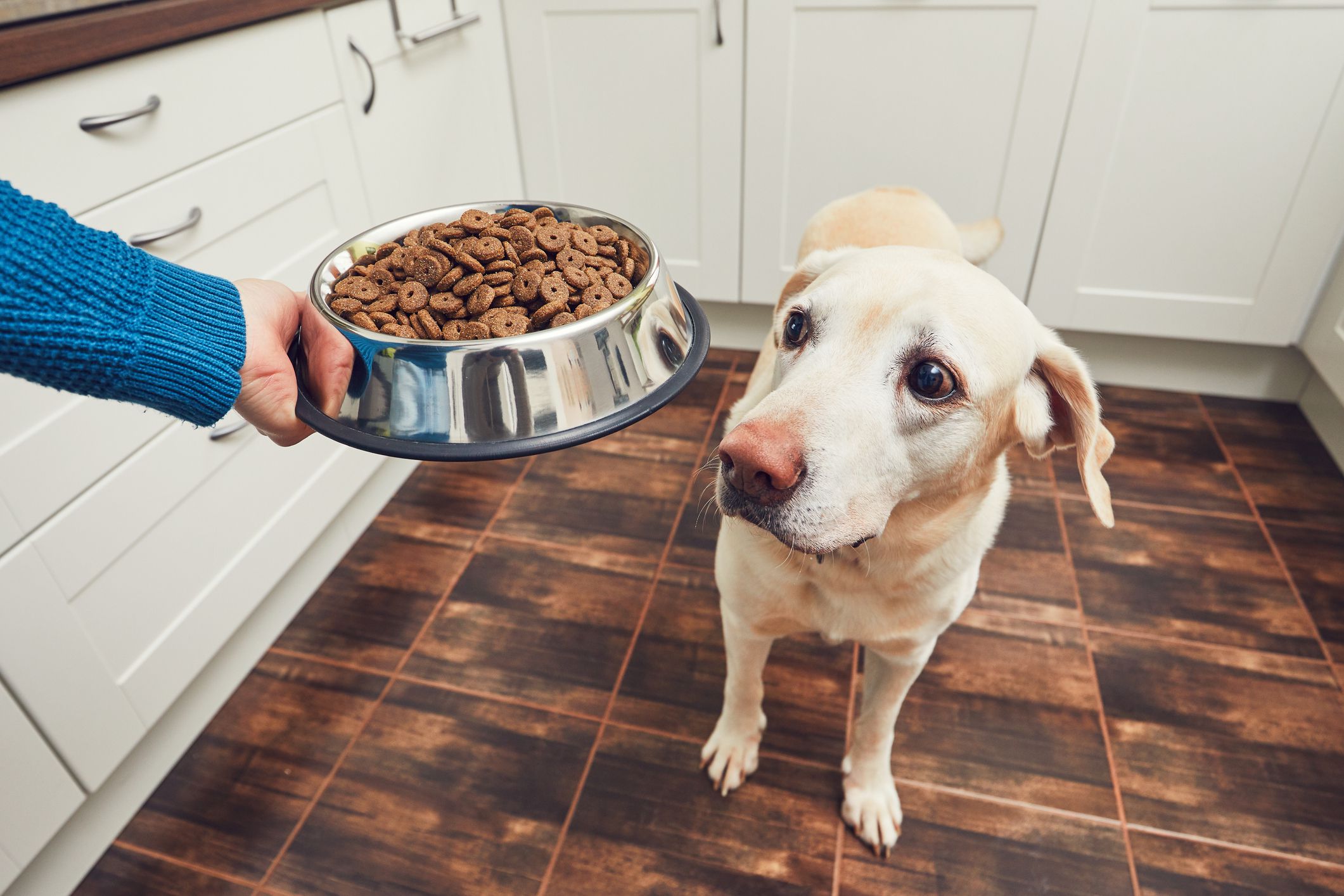
What Counts Toward My Dog’s Daily Calorie Intake?
Good question! A dog’s diet includes everything he eats: pet food, table scraps, treats, chews, KONGs, foods used to administer medications, and any other food item that goes in his mouth. Make sure you share all of this information with your vet if you’re working together to determine how much you should feed your dog.
If you like to feed treats to your best friend, reserve 10 percent of his daily calories for them. Stay strong—those puppy dog eyes are mighty powerful—and make sure the main source of calories for your pooch comes from a complete and balanced pet food. That way you know he’ll get the right amount of essential nutrients in the right proportions.
How Often Should I Feed My Dog?
Generally, two or three times a day is the right feeding frequency for adult dogs, depending on the rhythms of your household. If you’re feeding your pooch twice a day, divide his daily total for calories/dog food by half for each feeding. If you prefer to feed him three times a day, divide his daily total by three.
How Do I Know I’m Feeding My Dog Correctly?
Is he healthy, active, and alert? Does he eat what you give him? Is he maintaining his ideal weight? Then you’re doing it right. “If he’s eating the same amount as usual but losing weight, up his calorie level by 25 percent,” Romine says. “If that doesn’t stop the weight loss, something is happening internally and you should get him to a vet.”
